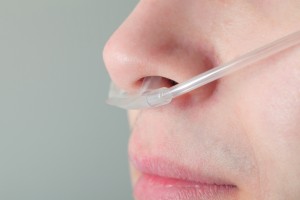Although both hyperoxemia and ventilator-associated  pneumonia (VAP) are common in seriously ill patients on mechanical ventilators, how these two conditions might interact has not been addressed. New research found that hyperoxemia is independently associated with VAP, and the risk of developing VAP significantly increases with each additional day a patient has hyperoxemia.
pneumonia (VAP) are common in seriously ill patients on mechanical ventilators, how these two conditions might interact has not been addressed. New research found that hyperoxemia is independently associated with VAP, and the risk of developing VAP significantly increases with each additional day a patient has hyperoxemia.
The study, “Hyperoxemia as a risk factor for ventilator-associated pneumonia,” was published in the journal of Critical Care.
When using a mechanical ventilator, the risk of developing hyperoxemia, or elevated levels of oxygen in the blood, can range as high as 50 percent. Hyperoxemia results in reduced cardiac output, which impairs blood flow and oxygen transport. This condition also causes hyperoxic acute lung injury (HALI), which can result in pulmonary arterial thickening, impaired mucus clearance, and reduced immune response activation.
Little is known about the risk factors associated with VAP, which is the most common infection acquired by patients in an intensive care unit (ICU). Identifying risk factors is of immense interest, because VAP is associated with a high mortality rate. Previously, mice studies suggested that hyperoxia increased the chance of mortality associated with pneumonia infection. However, no association between hyperoxemia and VAP has been assessed.
Using a retrospective observational study, the authors analyzed 503 patients on mechanical ventilation for more than 48 hours and determined the incidence rate of VAP. Alarmingly, 28 percent of these patients had at least one episode of VAP, with most of these episodes occurring around day 14 day. Even more worrisome was the finding that 41 percent of the patients diagnosed with VAP were harboring multidrug resistant bacterial species.
Using multivariate analysis, the researchers found that the number of days a patient experienced hyperoxemia, and the presentation of hyperoxemia at ICU admission, were both independently associated with VAP.
Overall, this study uncovered that hyperoxemia is an independent risk factor for VAP. This ultimately suggests a relationship between these two negative clinical outcomes, of which VAP predisposes patients to high mortality rates. Given these findings, efforts to prevent hyperoxemia during mechanical ventilation may reduce the prevalence of VAP in ICUs.


